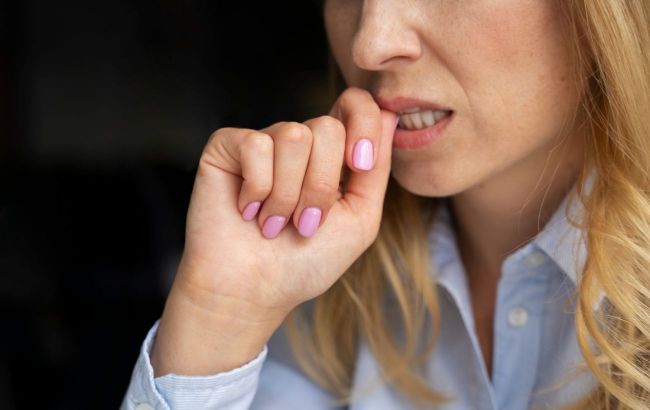Dermatologist names 3 common habits that harm nails
 Illustrative photo (Freepik)
Illustrative photo (Freepik)
Caring for your nails is crucial, and neglecting them is simply not an option. It's time to kick some bad habits to the curb and pay close attention to the health of your nail plates, citing Best Life. Here's what you need to know about practices that are horrible for your nails.
Nail biting
Dermatologist Lindsey Zubritsky warns that this habit can wreak havoc on your nails.
Not only is it aesthetically unpleasing, but it also poses risks of microtears and cuts on your fingers, gastrointestinal issues, and threats to your teeth and gums.
Constant nail biting applies pressure to the nail bed, which over time can alter their shape or distort them. Bitten nails can become rough, have short uneven edges, and may cease to grow properly.
If individuals bite nails with warts caused by viruses, the condition could spread the virus to other fingers, the face, mouth, and lips.
Nail picking
According to doctors, this habit can lead to open wounds on the nails, making it easy for bacteria to enter.
Dermatologists warn that nail picking can cause an infection called paronychia, which is inflammation of the skin around the finger or nail.
Applying gel nail polish
It can actuallt strengthen nails as it protects them from mechanical damage, but only if done by a professional. Otherwise, there's a risk of thinning the nail plate through excessive filing or causing damage during nail polish removal.
Cheap polishes may contain toxic substances that thin the nail plate, which is why it's better to focus on the ingredients rather than the price.
Harmful substances for nails include formaldehyde or formaldehyde resins, toluene, ethyl acetate, butyl ether, methacrylic acid, xylene, dibutyl phthalate.
Nail care
If your nails are healthy, a regular clipper should suffice for trimming. Typically, a stronger clipper is needed for toenails.
If using a clipper is painful, try using a file to shape your nails gently.
Avoid moving the tool in just one direction (a common practice to prevent damage). Simply being cautious is enough.
For fingernails, trim them straight at first, then carefully round them off. For toenails, trim them straight in a line to prevent ingrown nails.

